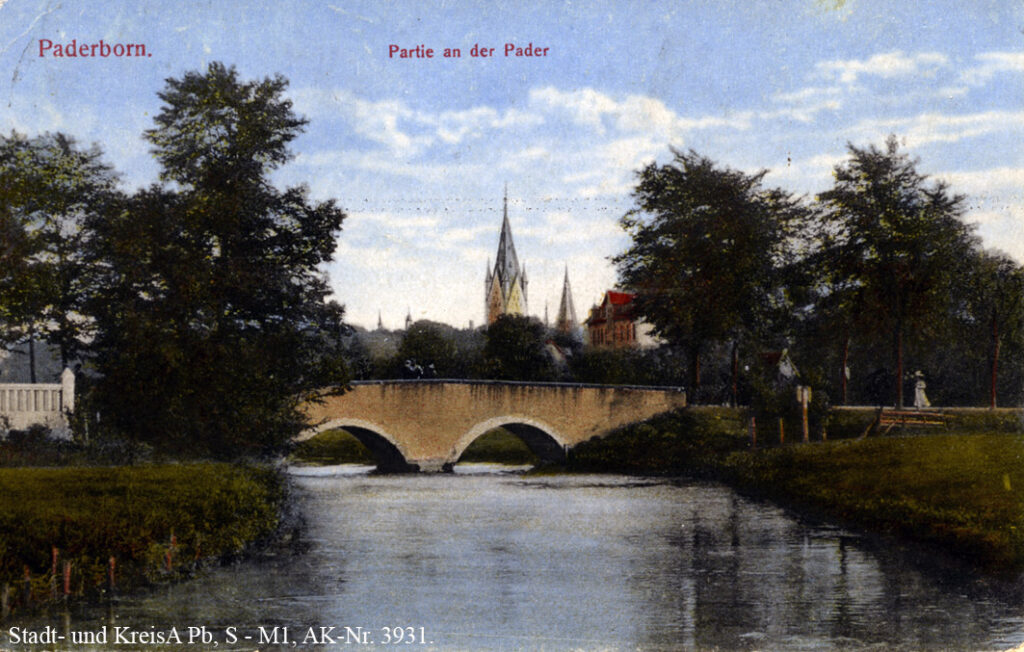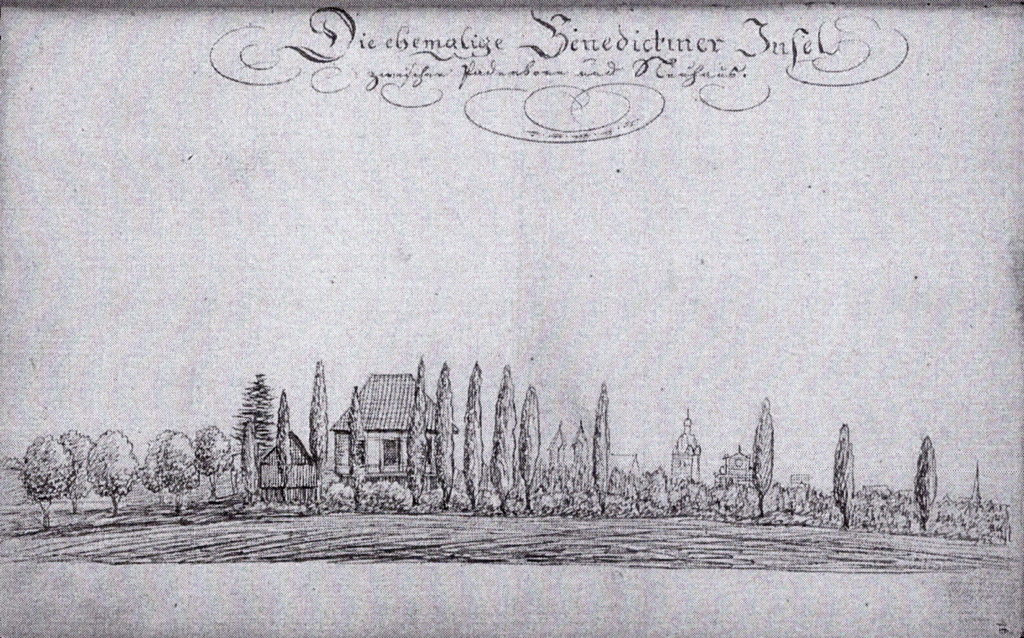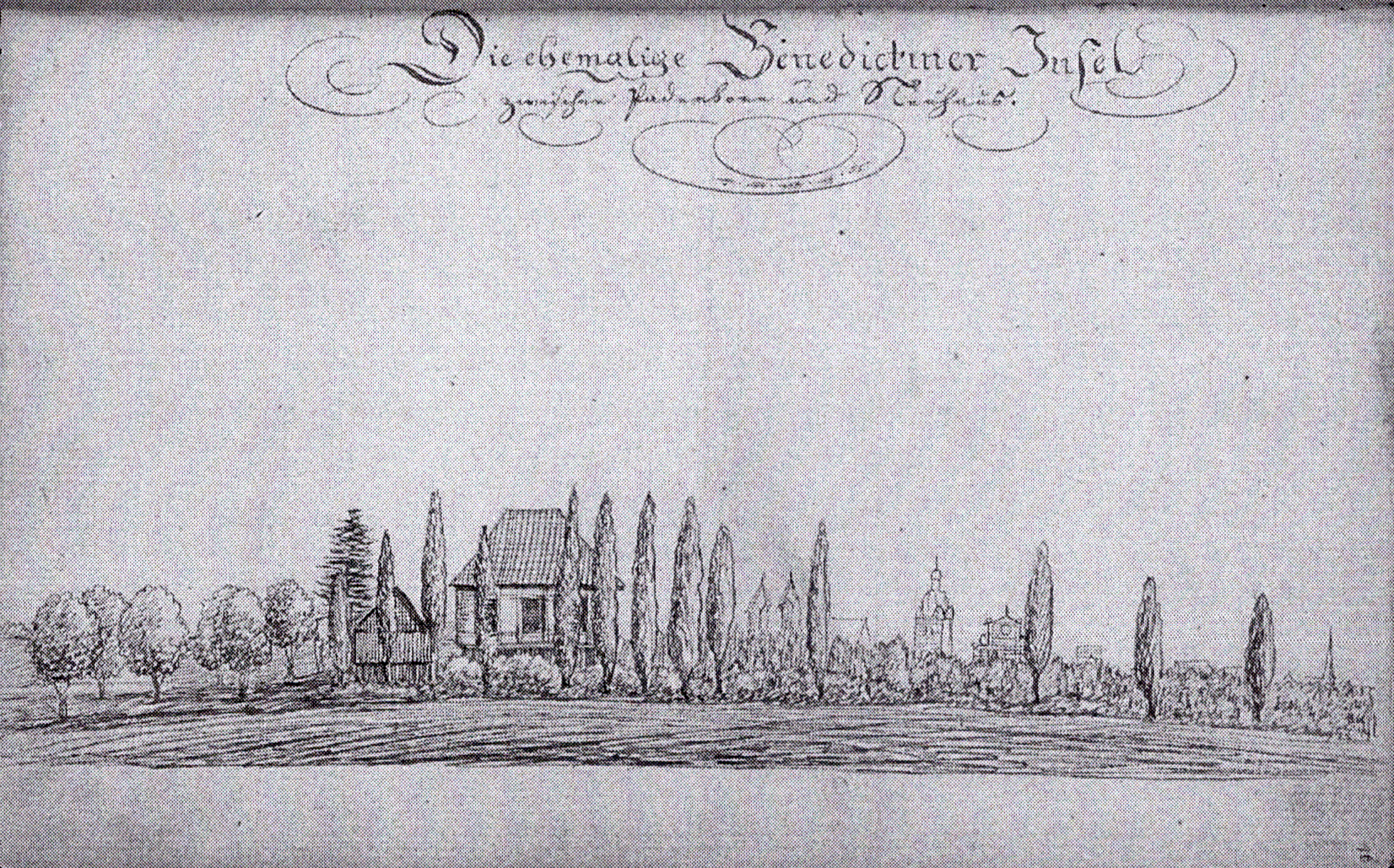On the peri-urban headwaters of the Pader, which passed the city wall in a northwesterly direction, customary agriculture and cattle-breeding was practised since the High Middle Ages. The riverine free float of arable, grass and garden areas was, until the beginning of the 19th century, divided between secular and spiritual landlords...
Credit: View of Neuhaus, c. 1820/30, watercolour by Friedrich v. Mengersen (Stadt- und Landesbibliothek Dortmund/ Residenzmuseum Schloss Neuhaus, photo M. Ströhmer 2019)











